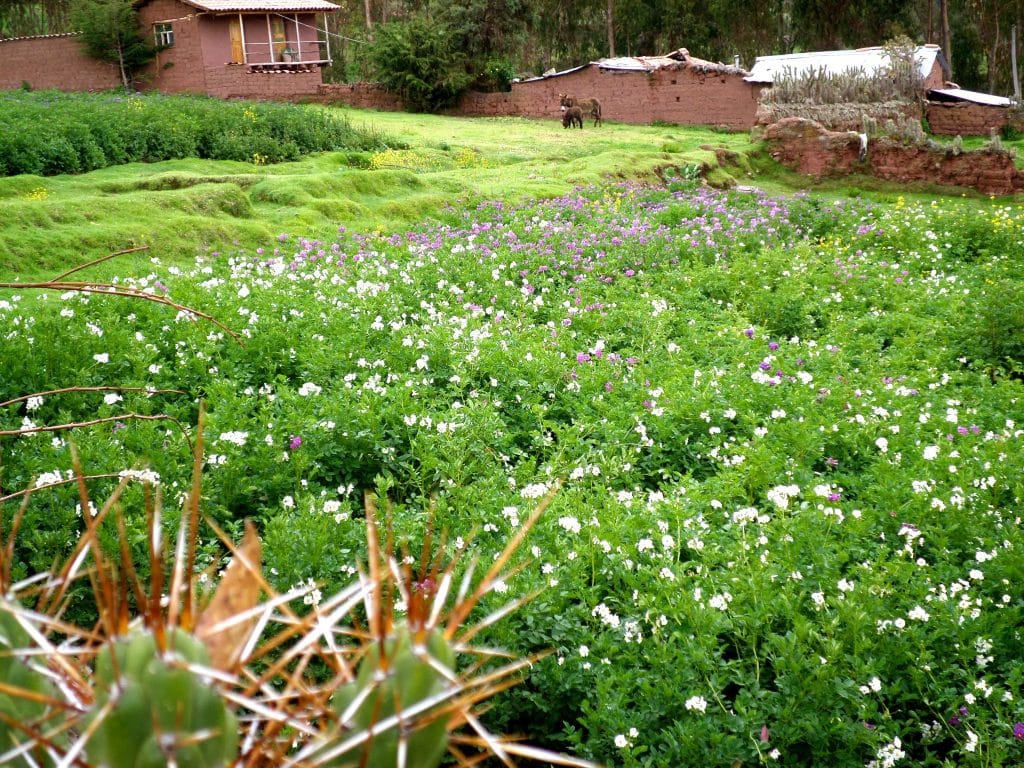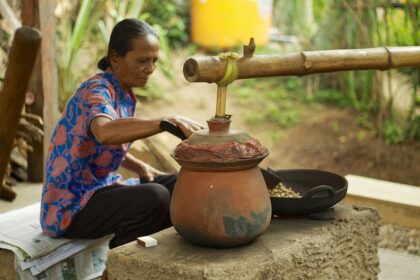As the heart of the Incan empire, the city of Cuzco, Peru represents the center of the indigenous Quechua culture. Beneath well-preserved colonial architecture and churches introduced by the Spanish conquerors, you can still spot Inca walls and roads supporting more modern structures. Modern Quechua women line the streets selling snacks or handicrafts, dressed causally in bowler hats and ajotas (sandals made out of recycled tires). Other women stand out, dressing flamboyantly in rainbow-colored textiles and dragging reluctant llamas for photographs with tourists.
While these encounters expose you to an indigenous Peruvian culture, a fuller experience requires leaving the city limits.

Fortunately, Andean Discovery allows us to do just that, carrying us off from the cobblestone streets of Cuzco onto one-way dirt roads, clinging to the edge of cliffs as we wind our way through remote villages. For two hours we drive past farming terraces peeking out beneath cloud cover, blue-tinted baby eucalyptus trees and crumbling brick huts, spray painting with expired presidential advertising campaigns. I try to keep my purse from sliding off my lap as we careen across corners and stop suddenly to let a man on a donkey cart squeeze past. The van stops at the top of one dusty hill, pulling up next to an antique-looking motorcycle and a rainbow fence, which I learn contains the village primary school.
“Welcome to Patabamba,” Natalie, our guide, grunts while straining to open the van door. “On the one hand, it’s similar to all the other villages in the area but at the same time, it’s like nowhere else on Earth”.
She leads us under a low overhanging into one of the villager’s courtyards, jumping out of the way of two kids playing tag. Two men in rainbow-colored vests and hats with ear flaps welcome us with simple but jubilant welcome music on their fife and drum, providing a march-like rhythm to move us over the mud. One drops the flute momentary to pick up a conch shell and announces our arrival with a triumphant bellow.

Suddenly three women appear, seemingly out of thin air, sprinkling yellow flower petals on our heads and embracing us individually in shy hugs. As the men start playing harvest music again, the women really start to embody their fairy godmother role by wrapping Natalie and I in a heavy dark skirt, a clasped scarf over the shoulders and a red felt hat. They balance on their tip-toes to dump a striped poncho over my brother’s tall shoulders and top his head with a tasseled wool hat.
Now that we are properly dressed, we exchange proper introductions, with Natalie translating from Quechua. She explains we’re about to witness Pachamacha, derived from the Quecha word, pacha (Earth) and manca (cooking vessel). It’s an important part of Peruvian culture, an Andean tradition maintained by modern-day visitors to celebrate the end of a successful harvest, usually in February or March.
More than just a meal, this mode of preparation celebrates fertility and life by paying homage to Pachamama (Mother Earth).

She barely gets started when Mauevtop, the man in charge, interrupts to put us to work. We start arranging rocks in a small circle, adding layers to create a closed three-dimensional oven. Mauevtop loads the small space with eucalyptus branches, wood and llama dung and ignites the pile, but quickly realizes the fire will not start quickly in this damp weather. He blows through a metal pipe to increase oxygen flow as Natalie confirms that males run this ceremony.
After creating a self-sustaining fire, he waves us to follow as he shows us the village. Little kids on a snack break from school curiously chew on corn cobs as we file past and walk up a hill. Natalie points out how the villager’s line their farming plots with cactus plants — “nature’s barbed wine” — to keep out unwanted intruders, animal or human. She explains the blanket of purple and white flowers are actually potato plants, and that the donkey is chewing grain apathetically near a plot of quinoa. After introducing us to most of the village fauna he leads us into a one-room family house, and the guinea pigs running around the floor scatter into one dark corner.
Eco-tourism And The Chimney Project
Natalie explains that Andean Discovery has been partnering with the village to fund and find volunteers for a chimney improvement project in the village. Traditionally, families live in one-room houses where the stove fills the whole house with smoke, darkening the walls, causing people to breathe in polluted air and creating a fire hazard since the family’s other belongings are in close proximity too the flame. As part of the project, Andean Discovery is helping to educate locals and modernize home construction with a slightly-separated kitchen and chimneys to create an escape route for smoke to exit the home.
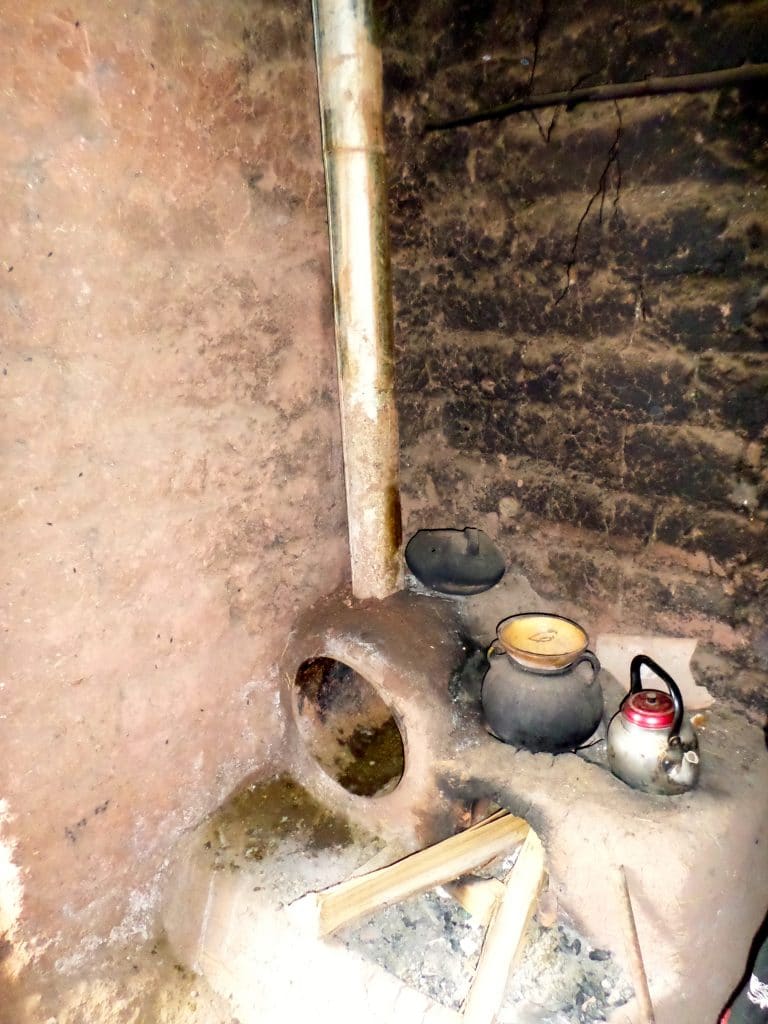
When we see the dark home walls that had not been modernized, the effects of constant smoke exposure are pretty obvious. The village sponsors home stays for volunteers so they can experience village life as they build, while promoting eco-friendly, sustainable and authentic tourism.
Back To Pachamacha
All this talk about food makes my stomach rumble. Fortunately, it’s time to move forward with the ceremony. Mauevtop puts on thick gloves, dissembles the oven and piles in potatoes, sweet potatoes, chicken, pork and cheese wrapped in a banana leaf. Natalie explains that sweet potato comes from the Amazon so the family got it from the weekly market, where the villagers barter with goods instead of money.
After placing the vegetables amidst the hot rocks, Mauevtop covers the pile with perpendicular layers of alfalfa leaves to add to the earthy flavor of the final dish. He shovels dirt onto the pile of reeds, tops it with plastic covers held down by bricks, then dusts his hands to signify we can relax for 30 minutes as the meal cooks.
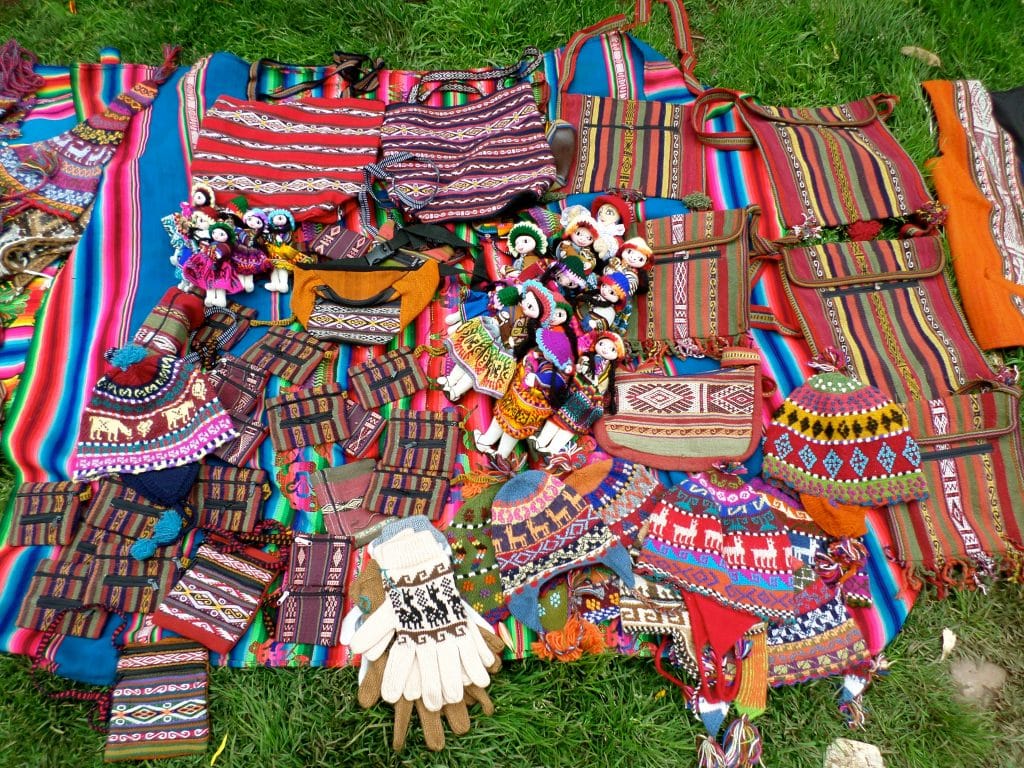
As the dirt pile simmers and steams in the foggy afternoon, a local named Roxana takes a moment to explain textile production in her village. First, she shows us the natural dyes that produce bright colors resistant to discoloration, despite the strong sun at this high altitude. She crushes some grey parasites found on cactus plants into her palms, suddenly staining them blood red. My brother and I exchange glances, surprised that a colorless bug can produce such intense hue. She hands us a finished scarf to feel, and astonishes us even more when we learn the machine-like precision of the stitches are produced entirely by hand, without the use of any kind of loom.
The table runners and scarves sport designs that are often unique to this village. She shows a funky geometric rendition of the main roads coming into the village, eye of a llama, waves swirling around the local lagoon and the spikes of cacti. These larger pieces truly tell a story, adding a whole new level of depth to the craft. The smaller pieces were also interest, like small dolls, meant to be accompany the dead to the afterlife, smiling up at us between table runners, purses, hats and mittens.
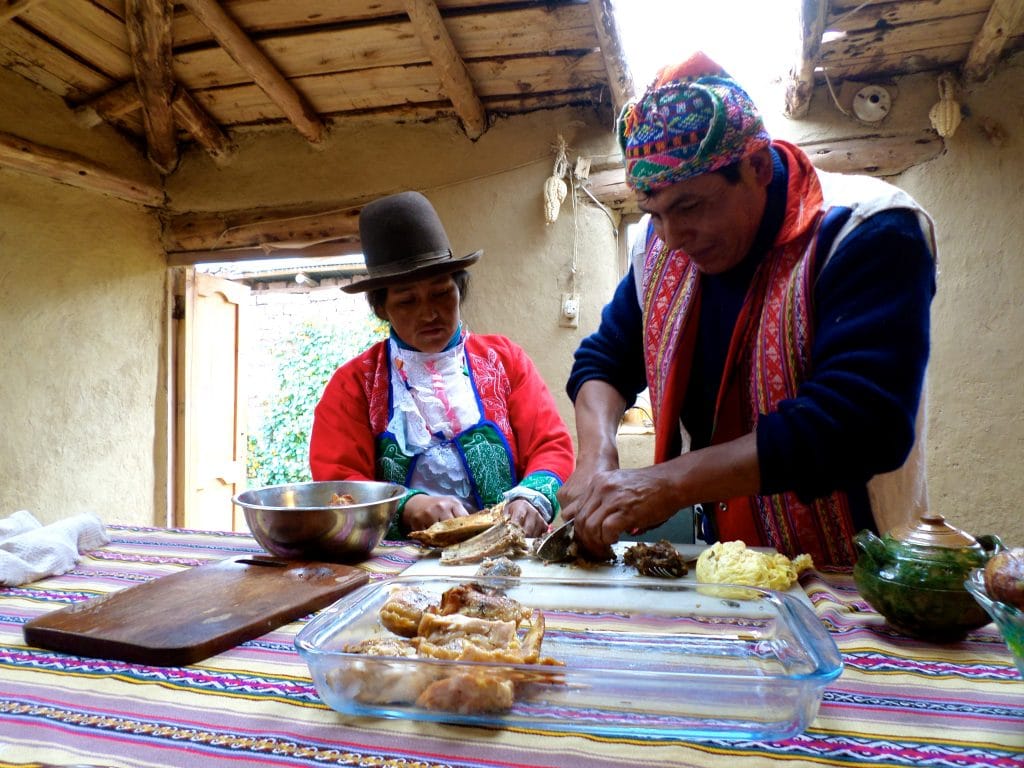
The clanging of pots awakens me from an almost hypnotic state of staring dreamily at all the colorful items. Mauevtop flings dirt behind him as he dissembles the oven and fishes out the meat and vegetables, as the kids of the household race to the table with dirty, mischievous faces. We all sit at the table, smiling at each other over piles of potatoes.
Everyone bows their heads before digging in, and although we do not speak the same language, there’s a pervasive sense of appreciation and unity that this ceremony seems to inspire. When munching on a slightly dirt-encrusted, simple meal of meat and potatoes, I cannot help but give thanks to the sun and the rain, our ability to nurture crops and prepare a meal, and most importantly, the sense of fellowship we have with these generous people who shared their lives with us for an afternoon.
Life in the village may be simple but the people of Patabamba live a vibrant existence, working close to the earth, creative pursuits and each other. What more could one ask for?
If you want a similar experience, Andean Discovery offers the pancamacha with this family as part of their Peru tours.
Katie Foote
Latest posts by Katie Foote (see all)
- 8 Outstanding Conservation Safaris Around The World - Apr 12, 2022
- These 10 Women Whiskey Distillers Will Make You Crave A Manhattan - Dec 12, 2018
- Ethical Travel: Should You Visit Thailand’s Long Neck Women Villages? - Dec 9, 2018
- 8 Pioneering Vegetarian Vacations Around The World - Aug 13, 2018
- A New Perspective: Can Travel Help Reverse Alzheimer’s? - Aug 5, 2018


